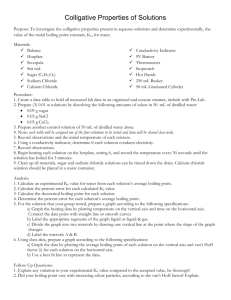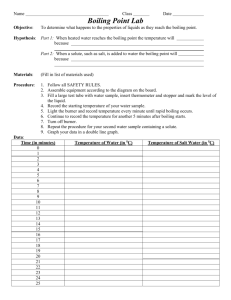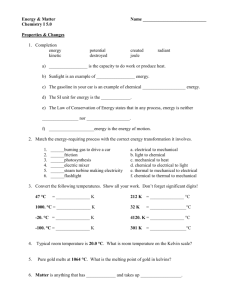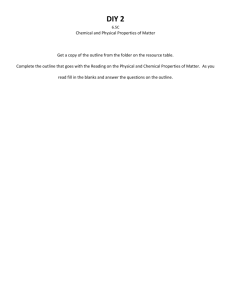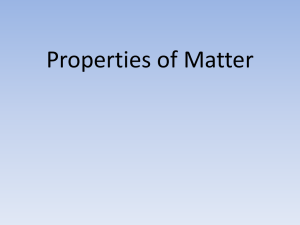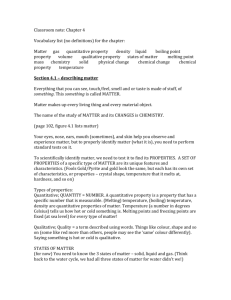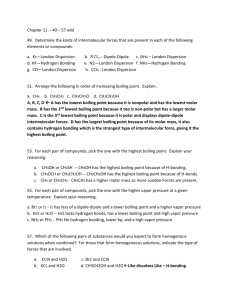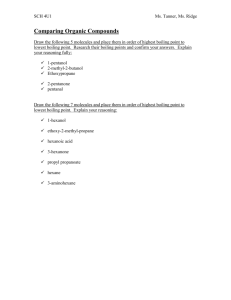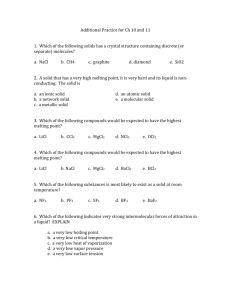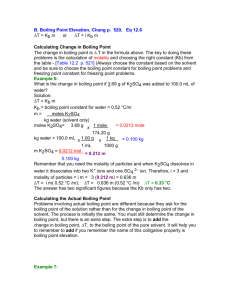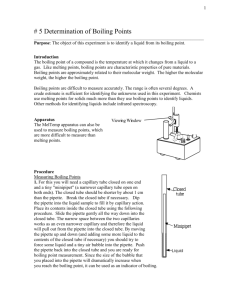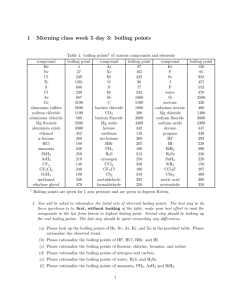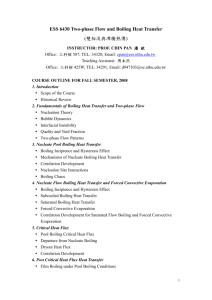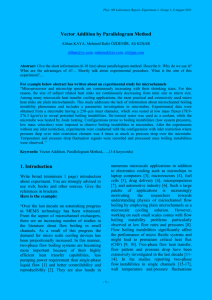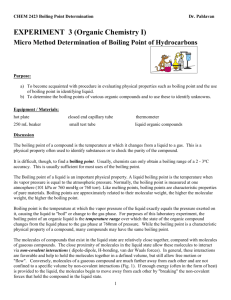Ch 10 Problems 14-15 (old masterton) - OPHS-AP
advertisement
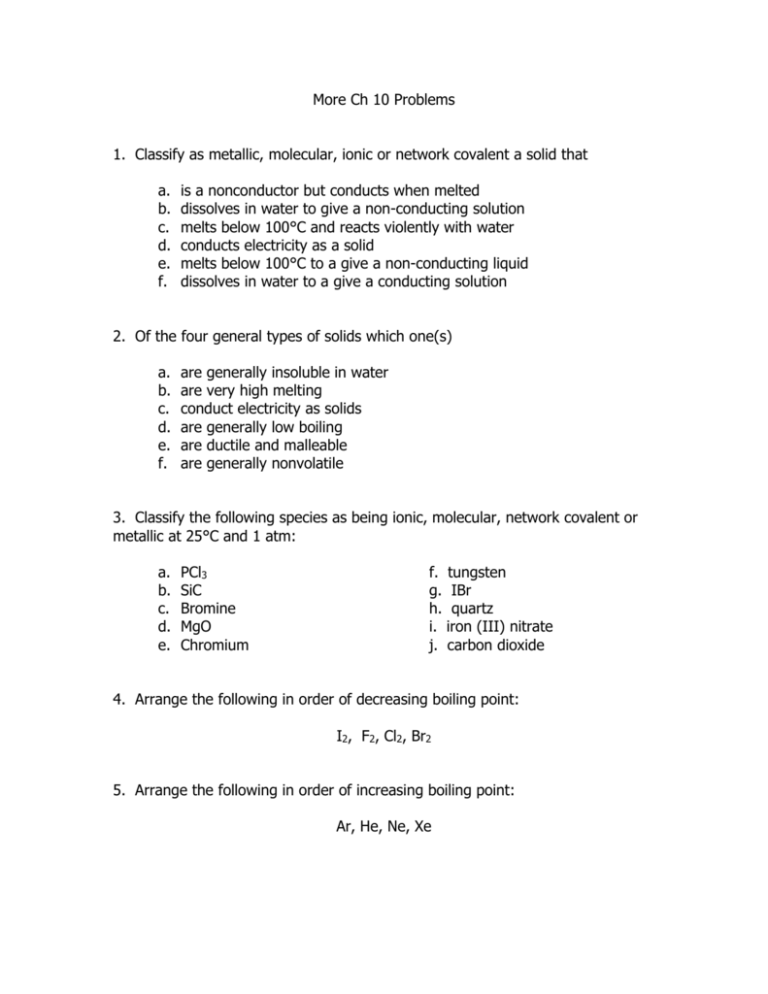
More Ch 10 Problems 1. Classify as metallic, molecular, ionic or network covalent a solid that a. b. c. d. e. f. is a nonconductor but conducts when melted dissolves in water to give a non-conducting solution melts below 100°C and reacts violently with water conducts electricity as a solid melts below 100°C to a give a non-conducting liquid dissolves in water to a give a conducting solution 2. Of the four general types of solids which one(s) a. b. c. d. e. f. are generally insoluble in water are very high melting conduct electricity as solids are generally low boiling are ductile and malleable are generally nonvolatile 3. Classify the following species as being ionic, molecular, network covalent or metallic at 25°C and 1 atm: a. b. c. d. e. PCl3 SiC Bromine MgO Chromium f. tungsten g. IBr h. quartz i. iron (III) nitrate j. carbon dioxide 4. Arrange the following in order of decreasing boiling point: I2, F2, Cl2, Br2 5. Arrange the following in order of increasing boiling point: Ar, He, Ne, Xe 6. Which of the following would you expect to show LDF? Dipole-dipole? a. b. c. d. e. CH4 CH3Cl CH2Cl2 CHCl3 CCl4 7. Which of the following would show hydrogen bonding? a. b. c. d. e. f. g. CH3F CH3—OH CH3—O—CH3 HO—OH CH4 NH3 H2N—NH2 8. Explain in terms of intermolecular forces why a. b. c. d. e. f. g. h. i. C2H6 has a higher boiling point than CH4 C2H5OH is higher boiling than C2H6 C2H5OH is lower boiling than NaF O2 is higher boiling than N2 CO is slightly higher boiling than N2 H2O is higher boiling than H2Te H2O2 is higher boiling than C2H6 I2 is lower melting than NaI ICl is higher melting than Br2 9. In which of the following processes is it necessary to break covalent bonds? Which are overcoming intermolecular forces? a. b. c. d. e. f. dissolving I2 in water boiling water subliming dry ice, CO2 decomposing N2O4 to NO2 melting benzene electrolysis of water 10. For each of the following pairs, choose the lower boiling member. EXPLAIN YOUR REASONING. a. b. c. d. F2 or Cl2 ClO2 or SiO2 LiCl or C3H8 HCl of HBr e. f. g. h. H2 or O2 NH3 or PH3 PH3 or AsH3 SO2 or SiO2 11. What are the strongest attractive forces that must be overcome to a. b. c. d. e. f. g. melt ice? Melt iodine? Vaporize CaCl2? Boil CCl4? Melt benzene, C6H6? Melt NaCl? Boil SiH4?



